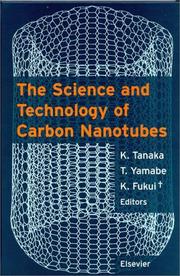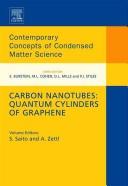| Listing 1 - 5 of 5 |
Sort by
|

ISBN: 1281036811 9786611036812 008052933X 9780080529332 9780080441016 0080441017 Year: 2005 Publisher: Amsterdam ; Boston : Elsevier,
Abstract | Keywords | Export | Availability | Bookmark
 Loading...
Loading...Choose an application
- Reference Manager
- EndNote
- RefWorks (Direct export to RefWorks)
Cold formed structural members are being used more widely in routine structural design as the world steel industry moves from the production of hot-rolled section and plate to coil and strip, often with galvanised and/or painted coatings. Steel in this form is more easily delivered from the steel mill to the manufacturing plant where it is usually cold-rolled into open and closed section members.This book not only summarises the research performed to date on cold form tubluar members and connections but also compares design rules in various standards and provides practical design exam
Steel --- Steel, Structural. --- Tubular steel structures. --- Cold working. --- Steel tubular structures --- Building, Iron and steel --- Steel, Structural --- Tubes, Steel --- Structural steel --- Building materials --- Civil engineering --- Girders --- Iron and steel bridges --- Iron, Structural --- Structural steel industry --- Steelwork --- Engineering --- Civil Engineering
Book
ISBN: 012811858X 0128117699 9780128118580 9780128117699 Year: 2018 Publisher: Cambridge, MA ; Oxford, United Kingdom : Gulf Professional Publishing, an imprint of Elsevier,
Abstract | Keywords | Export | Availability | Bookmark
 Loading...
Loading...Choose an application
- Reference Manager
- EndNote
- RefWorks (Direct export to RefWorks)
"Elements of Oil and Gas Well Tubular Design offers insight into the complexities of oil well casing and tubing design. The book's intent is to be sufficiently detailed on the tubular-oriented application of the principles of solid mechanics while at the same time providing readers with key equations pertinent to design. It addresses the fundamentals of tubular design theory, bridging the gap between theory and field operation. Filled with derivations and detailed solutions to well design examples, this book provides the well designer with sound engineering principles applicable to today's oil and gas wells"--
Oil well casing. --- Tubes --- Design and construction. --- Tubing --- Tubular goods --- Shells (Engineering) --- Casing, Oil well --- Oil well drilling --- Oil wells --- Equipment and supplies

ISBN: 0080426964 9780080426969 9780080540757 0080540759 1281028649 9781281028648 9786611028640 6611028641 Year: 1999 Publisher: Amsterdam ; New York : Elsevier,
Abstract | Keywords | Export | Availability | Bookmark
 Loading...
Loading...Choose an application
- Reference Manager
- EndNote
- RefWorks (Direct export to RefWorks)
Carbon Nanotubes (CNT) is the material lying between fullerenes and graphite as a new member of carbon allotropes. The study of CNT has gradually become more and more independent from that of fullerenes. As a novel carbon material, CNTs will be far more useful and important than fullerenes from a practical point of view, in that they will be directly related to an ample field of nanotechnology. This book presents a timely, second-generation monograph covering as far as practical, application of CNT as the newest science of these materials. Most updated summaries for preparation, purific
Electronics and optics of solids --- Carbon --- Nanostructured materials --- Tubes --- Tubes. --- Carbon. --- Nanostructured materials. --- Nanomaterials --- Nanometer materials --- Nanophase materials --- Nanostructure controlled materials --- Nanostructure materials --- Ultra-fine microstructure materials --- Microstructure --- Nanotechnology --- Group 14 elements --- Light elements --- Tubing --- Tubular goods --- Shells (Engineering)

ISBN: 1281762695 9786611762698 0080569919 0444532765 Year: 2008 Publisher: Amsterdam ; Boston : Elsevier,
Abstract | Keywords | Export | Availability | Bookmark
 Loading...
Loading...Choose an application
- Reference Manager
- EndNote
- RefWorks (Direct export to RefWorks)
This volume is devoted to mostly to nanotubes, unique synthetic nanoscale quantum systems whose physical properties are often singular (i.e. record-setting). Nanotubes can be formed from a myriad of atomic or molecular species, the only requirement apparently being that the host material or "wall fabric? be configurable as a layered or sheet-like structure. Nanotubes with sp2-bonded atoms such as carbon, or boron together with nitrogen, are the champions of extreme mechanical strength, electrical response (either highly conducting or highly insulating), and thermal conductance. Carbon nanot
Carbon. --- Nanostructured materials. --- Tubes. --- Tubing --- Tubular goods --- Shells (Engineering) --- Nanomaterials --- Nanometer materials --- Nanophase materials --- Nanostructure controlled materials --- Nanostructure materials --- Ultra-fine microstructure materials --- Microstructure --- Nanotechnology --- Group 14 elements --- Light elements
Book
ISBN: 1613443684 0857091395 1845697618 9780857091390 9781613443682 9781845697617 Year: 2011 Publisher: Cambridge : Woodhead Pub.,
Abstract | Keywords | Export | Availability | Bookmark
 Loading...
Loading...Choose an application
- Reference Manager
- EndNote
- RefWorks (Direct export to RefWorks)
Understanding the properties of polymer carbon nanotube (CNT) composites is the key to these materials finding new applications in a wide range of industries, including but not limited to electronics, aerospace and biomedical/bioengineering. Polymer-carbon nanotube composites provides comprehensive and in-depth coverage of the preparation, characterisation, properties and applications of these technologically interesting new materials.Part one covers the preparation and processing of composites of thermoplastics with CNTs, with chapters covering in-situ polymerization, melt processing
Carbon composites. --- Nanocomposites (Materials). --- Nanotubes. --- Polymeric composites. --- Nanotubes --- Nanocomposites (Materials) --- Polymeric composites --- Carbon composites --- Chemical & Materials Engineering --- Engineering & Applied Sciences --- Materials Science --- Carbon. --- Nanostructured materials. --- Tubes. --- Tubing --- Tubular goods --- Nanomaterials --- Nanometer materials --- Nanophase materials --- Nanostructure controlled materials --- Nanostructure materials --- Ultra-fine microstructure materials --- Shells (Engineering) --- Microstructure --- Nanotechnology --- Group 14 elements --- Light elements
| Listing 1 - 5 of 5 |
Sort by
|

 Search
Search Feedback
Feedback About UniCat
About UniCat  Help
Help News
News